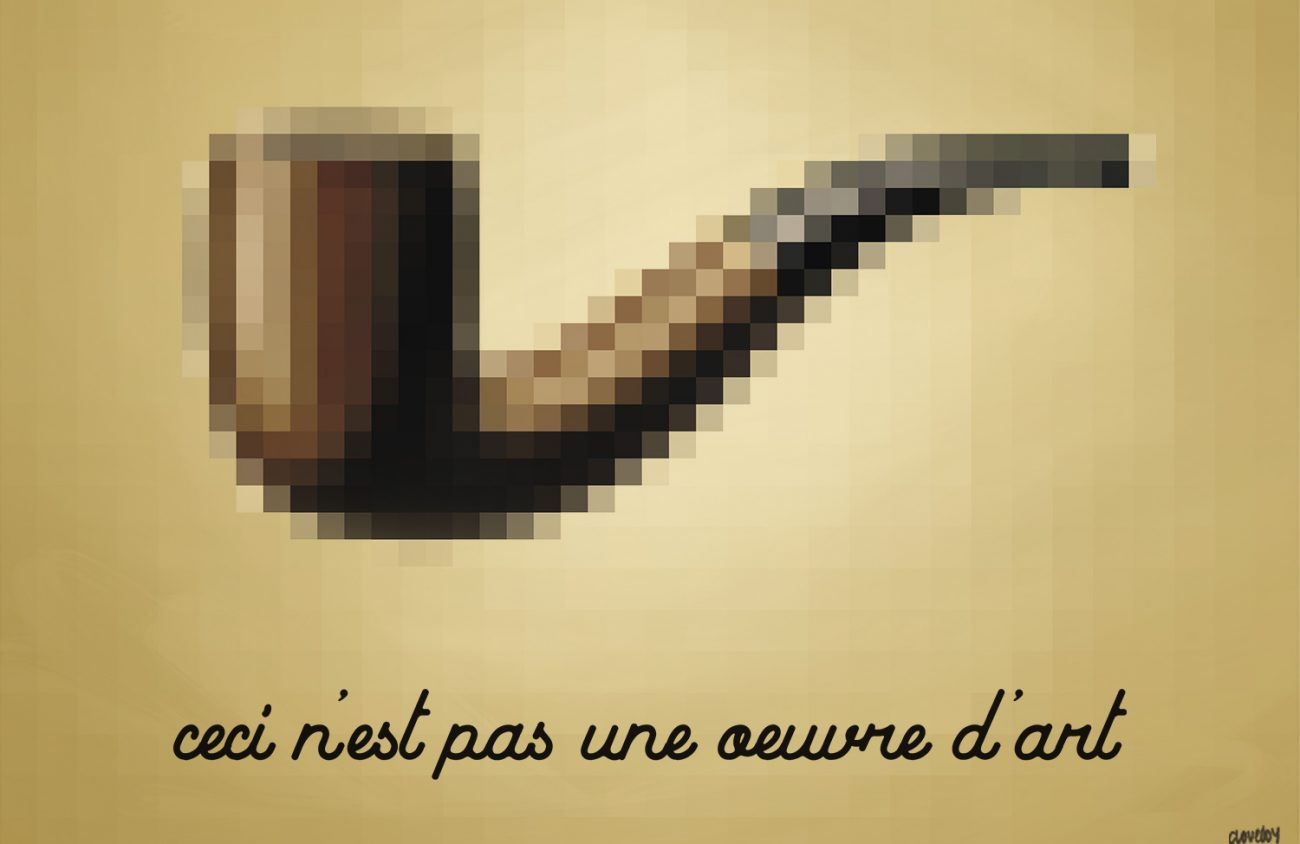For the first time ever, Eugene Weekly is offering the public the chance to buy the cover of our newspaper.
That’s digitally speaking, of course. We’ve converted the cover of today’s paper – our annual Tech Issue – into a digital file that is a unique NFT, or “non-fungible token.” The image, by EW designer Chelsea Lovejoy, is an allusion to René Magritte’s 1929 painting “Ceci n’est pas une pipe.” The painting, also titled “La Trahison des images (The Treachery of Images),” is itself a commentary on the insubstantiality of art.
The EW cover in NFT form is up for sale at OpenSea.io. The online auction will run until 5 pm April 23.
All proceeds from the sale, after expenses, will go to help fund EW’s news operation.
In case you’re not familiar with NFTs, they are the current darling at the intersection of art and technology. They depend, like cryptocurrencies such as Bitcoin, on blockchain technology, which allows the creation of unique, non-reproducible digital files with clearly established ownership.
In just the past few months, NFT art, from portraits and landscapes to cartoon cats and avatars, has been sold online for staggering sums of money. On March 11, a digital collage of photos by Mike Winkelmann, the artist known as Beeple, sold at auction online for $69 million.
Eugene artist Michael Salter, a professor of art/new media at the University of Oregon, recently listed three of his own digital works in NFT form for auction at Foundation.app.
“My work at its heart is an inquiry into capitalism and value, so this whole thing for me is an extended experiment to see and feel how it works,” he writes in an email to EW.
Salter notes that many people don’t see value in art that doesn’t exist in physical form, much as many don’t trust the value of currencies like Bitcoin. “All the weirdness that surrounds cryptocurrency pervades the process(es) in the NFT market,” he writes. “I think many people have no interest due to the abstract nature of the currency.”
The lack of a physical object for critics and collectors to touch or examine also means the art market has “few standards or critical discourse” about NFTs, he says.
Nonetheless, Salter remains hopeful.
“I do believe the market itself will have a long period to develop in order to have the kind of aesthetics, conceptual fortitude and seriousness I hope to see in any kind of art,” he writes. “Until that moment I am just a curious player in this strange, new, often complex but fascinating marketplace.”
NFTs have also crossed the line into the world of newspapers; as an experiment, on March 24 The New York Times auctioned an NFT image of a story its columnist Kevin Roose wrote titled “Buy This Column on the Blockchain!”
It sold for $560,000; the money will go to the Times’ Neediest Case Fund.
Much like the Times piece, the EW cover that is being auctioned is an ordinary digital image file that incorporates a unique blockchain identifier. As a result, the buyer will take ownership of the file, though copyright and reproduction rights to the cover image and text remain with Eugene Weekly.
One of the most interesting aspects of NFT art is that blockchain technology captures a complete history of ownership of any work. In the art world, that’s called a “provenance,” and provenances are often missing or even forged for important works. An NFT art work has a guaranteed provenance built in.
Eugene Weekly’s NFT cover image can also be resold; in that event EW will receive a 10 percent royalty, paid by the buyer, on the resale.
The surge in sales of NFT art has renewed concerns over the environmental costs of blockchain technology, which uses a vast amount of computer processing power — meaning a lot of electricity. In the absence of any clear consensus about the actual environmental cost of any single NFT art work, we will use a substantial portion of any money we receive to boost our environmental coverage.
We’ll also run a follow-up story after the sale and interview the successful buyer, if they’re willing.
This is, to our knowledge, the first time a newspaper in Oregon has offered an NFT version of one of its pages for sale, so this file could have future value as a collectible item.
To bid, go to EugeneWeekly.com/NFT. You’ll need to open a cryptocurrency “wallet,” or account, to bid using the cryptocurrency Ether, which you can purchase online in dollar amounts with a credit or debit card; we suggest you create your wallet at MetaMask.io.

